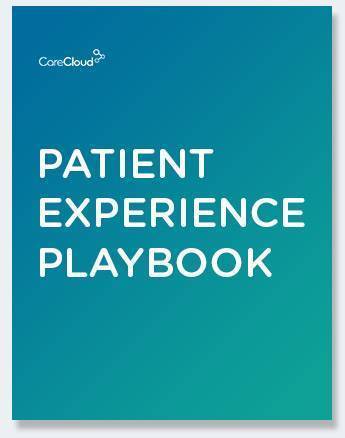by Emily Peters
Talking about money has long been considered taboo in medicine, but your patients’ perspective has changed. A 2017 study found that 70 percent of patients now think it’s a good idea for doctors and medical practices to discuss prices, but less than a third report price being mentioned in their visits.
In the past 10 years, insurance companies have passed 25–80 percent more of prescription costs on to patients. Nearly half of Americans are having trouble paying for the prescriptions they require. The high cost of medications is cited as the top reason for patients’ nonadherence, and a full 30 percent of prescriptions are never filled at all (according to an NCBI study). This financial challenge for patients is directly tied to medical practice outcomes and satisfaction.
“The high cost of medications is cited as the top reason for patients’ nonadherence, and a full 30 percent of prescriptions are never filled at all.”
To discuss, we sat down with Jordan Michaels, the director of operations at GoodRx. The company tracks medication pricing across more than 75,000 pharmacies, helping patients cut over $3 billion in prescription costs since 2011. Michaels started out his career thinking he’d become a physician, but he quickly realized a passion for health technology. He founded a startup called Ringadoc providing an after-hours telemedicine answering service, before moving into the electronic health records space and then to GoodRx.
Emily Peters (EP): Why do you think medical practices have avoided talking about money with their patients?
Jordan Michaels (JM): In my experience, doctors are stretched across demanding patient schedules and managing their medical practices, so if they could avoid the conversation about money with patients, they would, mostly because you don’t want to be asked questions that you don’t have the answers to. Doctors didn’t have the information about patient costs.
EP: Now, patient out-of-pocket costs are on the rise. Patients are paying for more of their medical costs directly. There’s added pressure to change that conversation.
JM: That’s one of the reasons why we’ve seen so much interest from medical practices. The flat $10 copay is going away. We’re seeing more people in high-deductible plans. We’re seeing co-insurance play more of a role in prescription drug benefits. That requires patients to be more knowledgeable and have that information about how and where to shop for their prescriptions.
“The flat $10 copay is going away. We’re seeing more people in high-deductible plans. We’re seeing co-insurance play more of a role in prescription drug benefits. That requires patients to be more knowledgeable and have that information about how and where to shop for their prescriptions.”
EP: I can see why patients would want this information on drug costs and prescription savings, but why does it matter to medical practices?
JM: My career in technology has been focused on working with doctors and trying to help make their lives easier and better so that they can save time and money while improving care. I’m seeing that doctors are having to be a part of that conversation around costs now for a couple reasons. First is adherence. If your patient can’t fill their medication, they’re not able to follow your recommended treatment, which will ultimately worsen their condition—not only a bad outcome for that individual patient, but also bad outcomes across your medical practice in a value-based care world.
Patient experience is the second key reason. Data shows 30 percent of prescriptions go completely unfilled, so that’s just inefficient. It’s a $300 billion problem in U.S. healthcare. It’s not what you want for your patients. We’ve heard from doctors that patients come back to them dissatisfied when they’re given a prescription that they just can’t afford. They’re somewhat uncomfortable because the solution is in front of them that this medication would help with their health condition, but they simply can’t afford it.
“Data shows 30 percent of prescriptions go completely unfilled, so that’s just inefficient. It’s a $300 billion problem in U.S. healthcare. It’s not what you want for your patients.”
And a third big reason is time-savings for the medical practice. A dermatology practice wrote a study for JAAD about this, saying that they were able to avoid hiring one less office staff member and that the physician saved one to two hours of time each week by reducing calls from patients about medication costs. Along with a physician mobile app, we also integrate with several different electronic health record systems to present the latest drug price information right at the point of care, so patients and doctors can have that conversation. The patient can leave feeling empowered and knowledgeable on the best way to get the medication—whether that’s through a coupon, prescription savings from a retailer or manufacturer program, or copay assistance—which ultimately leads to improved adherence and health outcomes.
EP: Shouldn’t this all be easier? Why is it so hard to get a clear picture of prescription drug prices?
JM: Most people don’t even realize that prices are different at different pharmacies. The cost of the same prescription can differ by more than $100 between two pharmacies that are across the street from each other. There are also huge savings, up to 80 percent, in switching to a generic instead of branded medication. We see the average patient saving $276 a year on their prescription by having access to price options.
Pharmacy benefit managers (PBMs) cut deals with pharmacies to give insured patients a discount off the “sticker price” of a drug. This discount can be huge—a drug with a retail price of $150 can be reduced to a $10 copay—and it can vary depending on where the patient buys and how many membership discounts or other coupons are available. We gather data from 70,000 pharmacies and even collect Medicare prices to try to provide the best deals.
Drug prices are so complicated because there are so many different prices that a patient might receive at the counter. You might or might not have a copay based on your current coverage, but plans have different formularies, and there may be coverage restrictions. Even if you know how much insurance will pay, there might also be a lower cash price, discount price, or membership price. There’s no simple formula or explanation for how prescriptions are priced; we have billions of prices in our database. To expect a patient or physician to know about all of these prices is unrealistic.
“To expect a patient or physician to know about all of these prices is unrealistic.”
EP: That data on prescription drug prices seems like it would give you an interesting perspective on changes and trends in healthcare.
JM: Millions of people visit GoodRx each month, so we’ve developed a pretty good understanding of drug affordability and adherence. At a particular price point, are your patients more adherent? Are they more likely to take the medication? Are they more likely to purchase; are they less likely? That’s the flywheel we’re building, and we think that will be helpful to medical practices that are becoming aware of where and how their patients are spending.
EP: How does it work for clinics to bring medication pricing information into practice for their patients?
JM: We are basically building a free prescription savings adherence tool for medical practices. We see that they want to get involved in helping patients understand their cost and to make sure that they can actually get their medications. Practices can start by just knowing that services like GoodRx are out there and talking to patients about medication costs. From there, we offer mobile apps, integration in various EHRs, and printed materials for the practice including brochures and even counter cards for the waiting room.
Another important service we offer is our support. We have a team of real people who help patients find the lowest prices for their medication and help them actually fill their prescription in the pharmacy. So if you can’t access the mobile app, the website, or just have questions about our services or a particular prescription, we’re here to help. We also have all the information on our website of what to expect when a patient is taking a new medication. It’s a lot of patient services and support that a physician can offer for free. It’s a big value-add for a practice and a big reason why we’re working with about 200,000 practices today.
“We have a team of real people who help patients find the lowest prices for their medication and help them actually fill their prescription in the pharmacy. So if you can’t access the mobile app, the website, or just have questions about our services or a particular prescription, we’re here to help.”
EP: It seems to me that this is a way for medical practices to evolve that close relationship between physician and patient. It used to be that patients would just trust their doctor and insurance company to give them good recommendations. That’s more complicated now, but by bringing cost into the exam room, the doctor can continue being a trusted advisor to the patient.
JM: There’s a growing focus on social determinants of health in this country. If your patient is underinsured or can’t afford healthy food, heat in their apartment, or their medications, it maybe doesn’t matter how talented and expert a medical practice you are. The outcomes are going to suffer. Value-based care is one force for change. It’s really up to individual medical practices to think about how they can innovate and think creatively about helping their patients. It’s good to see conversations around patient cost becoming part of that transformation.

Download the Patient Experience Playbook



